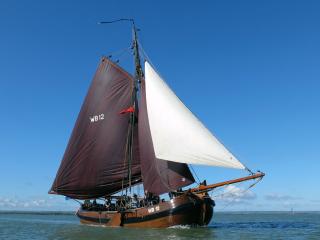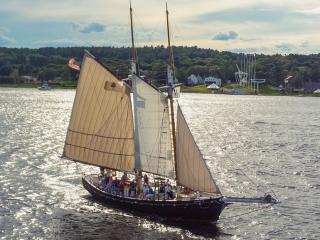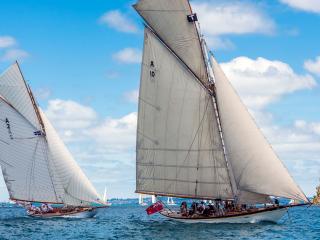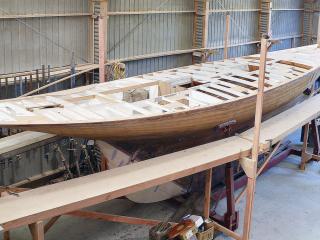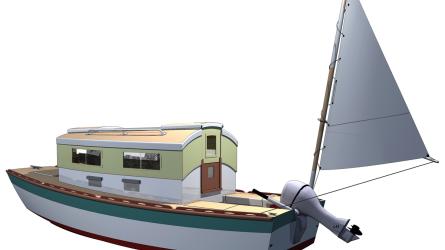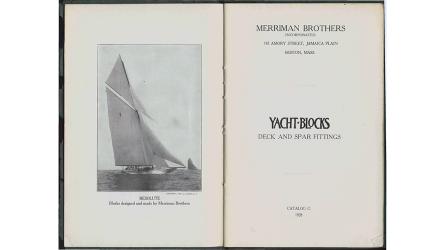January / February 2020
Making Bee Rails

Wooden bee rails mounted near the aft ends of booms to organize reefing lines and clew outhauls have a long history in traditional rigging, as proven here on the 1896 Tamar River barge LYNHER. She was rescued from dereliction in the early 1990s and was rebuilt. Since 2018, she has been daysailing with up to 12 guests out of Plymouth, England (see www.tamarbarge.org.uk).
Mounting “bee rails” on a sailboat’s boom is a traditional way to rig clew outhauls to simplify and facilitate reefing. The rails are usually made of hardwood, mounted opposite each other on each side of the aft end of a boom.
The port bee rail has simple holes to hold the bitter ends of outhaul lines, which have stopper knots, such as figure-eights, tied under the rail. These lines are used in what is known as slab reefing, also called jiffy reefing, which works equally well on gaff and marconi rigs. From there, the lines lead upward and through their corresponding clew grommets at each reefpoint on the sail, downward to reeve through corresponding sheaves in the starboard bee rail, and then forward to be made off on cleats mounted on the boom.
Sometimes, the primary clew outhaul is also rigged through the bee rails, and since this line isn’t used in reefing it is often made off to a cleat near the aft end of the boom. But because the halyard is typically made off on the starboard side of the mast, having the cleats for the reefing outhaul lines well forward on the boom on the same side makes them easy and safe for the crew to reach when the boom is swinging around as the sail luffs while it is lowered for reefing.
To read the rest of this article:
Click the button below to log into your Digital Issue Access account.
No digital access? Subscribe or upgrade to a WoodenBoat Digital Subscription and finish reading this article as well as every article we have published for the past 50-years.
ACCESS TO EXPERIENCE
2-for-1 Print & Digital Subscription Offer
For this holiday season, WoodenBoat is offering our best buy one, get one deal ever. Subscribe with a print & digital subscription for $42.95, and we’ll give you a FREE GIFT SUBSCRIPTION to share with someone special.
1 YEAR SUBSCRIPTION (6 ISSUES)
PLUS ACCESS TO MORE THAN 300 DIGITAL BACK ISSUES
PRINT+DIGITAL $42.95
Subscribe
To read articles from previous issues, you can purchase the issue at The WoodenBoat Store link below.
 Purchase this issue from
Purchase this issue from
